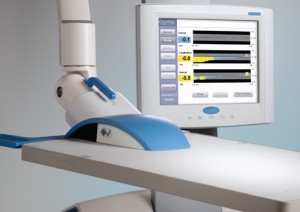New Weapon in Cancer Fight at University of Hawaii

Photo Credit: enewsletter.csmc.edu
Residents of the islands who are battling prostate cancer now have a new weapon to use in their fight. The Calypso system has come to the Cancer Center of Hawaii in Honolulu, helping doctors target cancer tumors more effectively so the treatment can be as successful as possible. The Calypso system is a relatively new method for delivering radiation to cancer patients, and Hawaii is already using the latest technology for the health benefit of their residents. We’ll tell you how the Calypso system works and why it is beneficial for patients in Hawaii dealing with prostate cancer.
What is Calypso?
The new Calypso system delivers precision and accuracy so that technicians are able to control the radiation beam at all times during a patient’s treatment. State-of-the-art technology pinpoints the precise location of the prostate and provides the clinician with visual cues to assist in pinpointing the radiation beam directly to its target. The same cues also alert the clinician when the prostate moves out of target, so he can adjust his radiation beam accordingly.
The Calypso system consists of three implantable beacon transponders that can be placed inside the patient’s prostate, which transmit a radiofrequency signal to the main system. The technology works in a similar way to a GPS, guiding the technician to the location he needs to be at to administer the greatest possible amount of radiation right into the cancer cells. Once the system is locked into the target, it continues to track the target throughout the treatment, so if the prostate moves during radiation, the technician can adjust his beam as necessary.
Benefits of the Calypso
Besides offering a painless, non-invasive method for improving the efficiency of radiation treatments, the Calypso system also:
- Allows technician to administer the maximum dose of radiation directly to the target
- Prevents damage to surrounding organs and tissue because radiation does not hit them
- Fewer side effects to the patient, since other organs and tissue are not affected
- Provides precision and certainty for the technician who is administering the treatment
The new technology has been at the Cancer Center of Hawaii for about six months now, and has been used with tremendous success.










